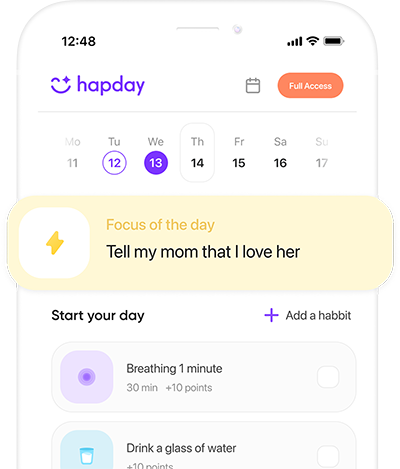In today’s fast-paced world, mindfulness has become a beacon of calm and mental clarity. For those with Autism Spectrum Disorder (ASD), mindfulness can be especially life-changing, offering a pathway to improved focus and overall wellbeing. This comprehensive guide sheds light on how mindfulness strategies can be a game-changer for individuals with ASD.
Table of Contents
- Understanding Autism Spectrum Disorder
- The Power of Mindfulness
- Mindfulness Strategies to Boost Focus
- Enhancing Wellbeing Through Mindfulness
- Tips for Successful Mindfulness Practice
- The Science Supporting Mindfulness and ASD
- Conclusion
Understanding Autism Spectrum Disorder
Autism Spectrum Disorder is a complex condition that affects social interaction, communication, and behavior. According to the Centers for Disease Control and Prevention (CDC), about 1 in 54 children in the United States is diagnosed with ASD. This means millions of individuals and families are touched by ASD around the globe.
Each person with ASD is unique, displaying a variety of symptoms and levels of severity. While some face communication hurdles, others may excel in specific areas. This diversity calls for personalized approaches in support and intervention.
The Power of Mindfulness
Mindfulness, with roots in ancient meditation, has surged in popularity due to its mental health benefits. It involves paying close attention to the present without judgment. Numerous studies highlight its effectiveness in reducing stress, boosting concentration, and enhancing emotional regulation.
For individuals with ASD, mindfulness offers significant benefits. A study published in the “Journal of Child and Family Studies” found that an eight-week mindfulness program improved social communication, self-regulation, and mental health in children with ASD. By practicing mindfulness, these individuals can better handle sensory overload, lessen anxiety, and improve social interactions.
Mindfulness Strategies to Boost Focus
1. Mindful Breathing
Mindful breathing is a core mindfulness practice that anchors attention in the present. It can be a potent tool for reducing anxiety and enhancing focus in individuals with ASD.
How to Practice:
- Find a quiet spot and sit comfortably.
- Close your eyes and take a deep breath, counting to four.
- Hold your breath for another four counts, then exhale slowly for four counts.
- Focus on the sensation of your breath moving in and out.
- Practice for five to ten minutes, gradually increasing as comfort grows.
Research in the “Research in Autism Spectrum Disorders” journal found that children with ASD who engaged in mindful breathing significantly improved their attention spans and reduced hyperactivity.
2. Body Scan Meditation
Body scan meditation involves focusing on different body parts, promoting relaxation and body awareness. This can help individuals with ASD understand bodily sensations, reducing anxiety and increasing focus.
How to Practice:
- Lie down comfortably and close your eyes.
- Start with your toes, noticing any tension or relaxation.
- Slowly move your attention up the body, part by part.
- Maintain non-judgmental awareness, noticing sensations without changing them.
“Autism Research and Treatment” journal research showed that body scan meditation reduced anxiety and enhanced attention in adolescents with ASD.
3. Sensory Integration with Mindfulness
Individuals with ASD often experience sensory challenges that impact their focus and wellbeing. By integrating sensory experiences into mindfulness, individuals with ASD can better manage sensory overload.
How to Practice:
- Create a sensory-friendly environment with soft lighting and minimal noise.
- Use sensory objects like textured balls or soothing scents.
- Incorporate these objects during mindfulness to help focus attention.
A study in the “Journal of Autism and Developmental Disorders” found that combining mindfulness with sensory integration improved sensory processing in children with ASD.
Enhancing Wellbeing Through Mindfulness
1. Mindful Movement
Mindful movement through activities like yoga and tai chi blends physical activity with mindfulness, promoting health and emotional wellbeing for individuals with ASD.
How to Practice:
- Start with simple yoga poses or tai chi sequences.
- Focus on body sensations during each movement.
- Encourage slow, deliberate movements combined with mindful breathing.
Research in the “Journal of Developmental & Behavioral Pediatrics” found that yoga interventions enhanced emotional regulation and social skills in children with ASD.
2. Loving-Kindness Meditation
Loving-kindness meditation cultivates warmth and compassion towards oneself and others, enhancing emotional regulation and social connections in those with ASD.
How to Practice:
- Sit comfortably and close your eyes.
- Begin by sending love to yourself with phrases like, “May I be happy, may I be healthy.”
- Extend these feelings to others, starting with loved ones and eventually including all beings.
The “Journal of Positive Psychology” reported that loving-kindness meditation increased positive emotions and reduced anxiety in individuals with ASD.
3. Mindful Eating
Mindful eating involves savoring the sensory experience of food, which can help individuals with ASD develop a healthier relationship with eating.
How to Practice:
- Select a simple meal or snack.
- Eat slowly, paying attention to each bite, flavor, and texture.
- Avoid distractions like screens during meals.
The “Appetite” journal found that mindful eating interventions led to healthier eating habits and improved self-regulation in children with ASD.
Tips for Successful Mindfulness Practice
- Start Small: Begin with short, simple practices, gradually increasing as comfort grows.
- Create a Routine: Consistent practice is key. Integrate mindfulness into daily activities.
- Personalize Practices: Tailor mindfulness to the individual’s preferences and needs for greater effectiveness.
- Promote Non-Judgmental Awareness: Encourage self-acceptance during practice.
- Involve Caregivers and Educators: Foster a supportive environment for learning mindfulness strategies.
- Monitor Progress: Regularly evaluate which practices work best, adjusting as needed.
The Science Supporting Mindfulness and ASD
Scientific research backs the positive impact of mindfulness on individuals with ASD. A meta-analysis in the “Journal of Autism and Developmental Disorders” found that mindfulness interventions improved emotional regulation and social communication. Moreover, “Social Cognitive and Affective Neuroscience” journal research indicated that mindfulness leads to structural brain changes, enhancing attention and reducing stress.
Conclusion
Mindfulness offers transformative strategies for enhancing focus and wellbeing in individuals with ASD. By incorporating practices like mindful breathing and movement, individuals on the spectrum can achieve greater self-awareness, emotional regulation, and social connectedness.
As the evidence grows, mindfulness continues to prove its potential in transforming lives, becoming an essential part of holistic approaches to improving the quality of life for those with ASD. Mindfulness provides a compassionate, inclusive path towards greater focus, wellbeing, and self-acceptance.


I wonder if there are any apps that can help with mindful breathing or body scan meditation? It seems like tech could play a role in supporting these practices for people with ASD! Anyone have recommendations?
‘Transformative’ is quite a strong word for what mindfulness can do! Yes, it has benefits, but let’s not pretend it’s a miracle cure. People with ASD face numerous challenges that can’t just be solved by sitting quietly and breathing deeply.
‘Miracle cure’ might be an exaggeration; however, some people do find value in these practices when combined with other forms of support.
‘PonderingPete’, while I agree that combining approaches is vital, I think we also need to temper our enthusiasm when discussing tools like mindfulness.
I’m not entirely convinced that mindfulness is a one-size-fits-all solution for everyone with ASD. Each person’s experience is unique, and while it may help some, others might need different approaches. What do you all think? Is there room for skepticism here?
@SkepticalSally45 That’s a fair point! I believe combining mindfulness with other therapies could offer a more tailored approach for individuals.
@SkepticalSally45 Exactly! We need diverse strategies to cater to the varied needs of those with ASD.
‘Mindful Eating’ sounds like such an interesting concept! It might not only improve self-regulation but also promote healthier eating habits overall. I’m eager to see how it works in practice!
I find it fascinating how mindfulness practices can lead to structural brain changes as mentioned in the research! It’s incredible what the mind is capable of when we take time to focus and be present.
This guide offers interesting insights into how mindfulness can be integrated into daily life for individuals with ASD. I’m particularly intrigued by the idea of sensory integration with mindfulness—sounds like a practical approach worth exploring further.
Yes! Sensory integration makes total sense given the challenges faced by those on the spectrum—it’s really about creating a supportive environment!
This article gives me hope that mindfulness can truly make a difference in lives affected by ASD! Simple practices like mindful breathing can lead to significant improvements in daily life.
While I appreciate the intention behind this article, it seems overly optimistic about the effectiveness of mindfulness for all individuals with ASD. Not every technique works for everyone, and claiming a one-size-fits-all solution can be misleading. It’s essential to address that some may not benefit from these strategies at all.
Exactly! It’s crucial to acknowledge that individuals with ASD are unique, and their responses can vary widely. Promoting mindfulness is great, but it should be accompanied by realistic expectations.
‘Body Scan Meditation’ seems like a fantastic way to build body awareness and reduce anxiety. I’ve found that tuning into my body helps me manage stress better — can’t wait to share this technique!
I appreciate how comprehensive this guide is; it’s clear that there’s substantial research backing these methods! Mindfulness should definitely be more integrated into support systems for individuals with ASD.
‘Loving-Kindness Meditation’ sounds delightful! Practicing compassion towards oneself and others could foster better emotional connections for those on the spectrum. This article gives practical steps that make it accessible—definitely worth trying!
I love how simple yet profound that sounds! It’s amazing how something like meditation can have such far-reaching effects on emotional wellbeing.
Absolutely! It’s refreshing to see mental health topics addressed so positively; compassion is key!
Honestly, I’ve heard so much about mindfulness lately it’s becoming cliché at this point! Every article talks about it as if it’s revolutionary—let’s get real; it’s just another trend.
Such an insightful read! The benefits of loving-kindness meditation really resonate with me. It’s heartwarming to think about spreading compassion, especially in our fast-paced world. This could truly help improve social connections for those on the spectrum.
This guide is amazing! I love how mindfulness can help those with ASD find their center. Mindful breathing seems like such a simple yet powerful tool to enhance focus and manage anxiety. I can’t wait to try it out myself!
While I appreciate the effort behind this article, I’m curious about how these mindfulness strategies can be adapted for older individuals with ASD. Many techniques seem geared towards children, but what about teens or adults? Let’s discuss!
So we’re telling kids with ASD to ‘just breathe’? Fantastic advice! If only life were so simple! What next? ‘Just smile your worries away’? Mindfulness might help but let’s not oversimplify it!
This post provides an informative overview of mindfulness as a tool for managing Autism Spectrum Disorder. The research references lend credibility to the claims made about its benefits, particularly in improving social interactions and reducing anxiety levels. I look forward to trying some of these techniques myself.
This article beautifully highlights the benefits of mindfulness for individuals with Autism Spectrum Disorder. It’s heartwarming to see how such practices can lead to improved focus and overall wellbeing. The strategies outlined here, especially mindful breathing, seem easy to implement and could make a significant difference in daily lives. Thank you for sharing this valuable information!